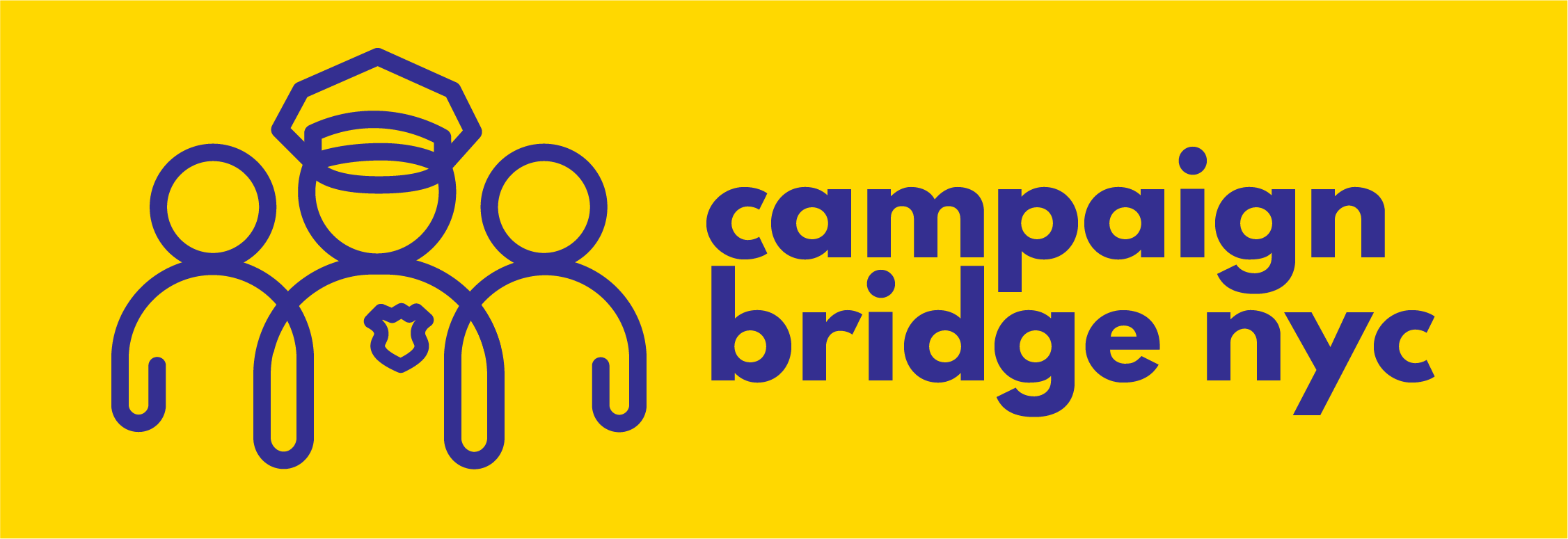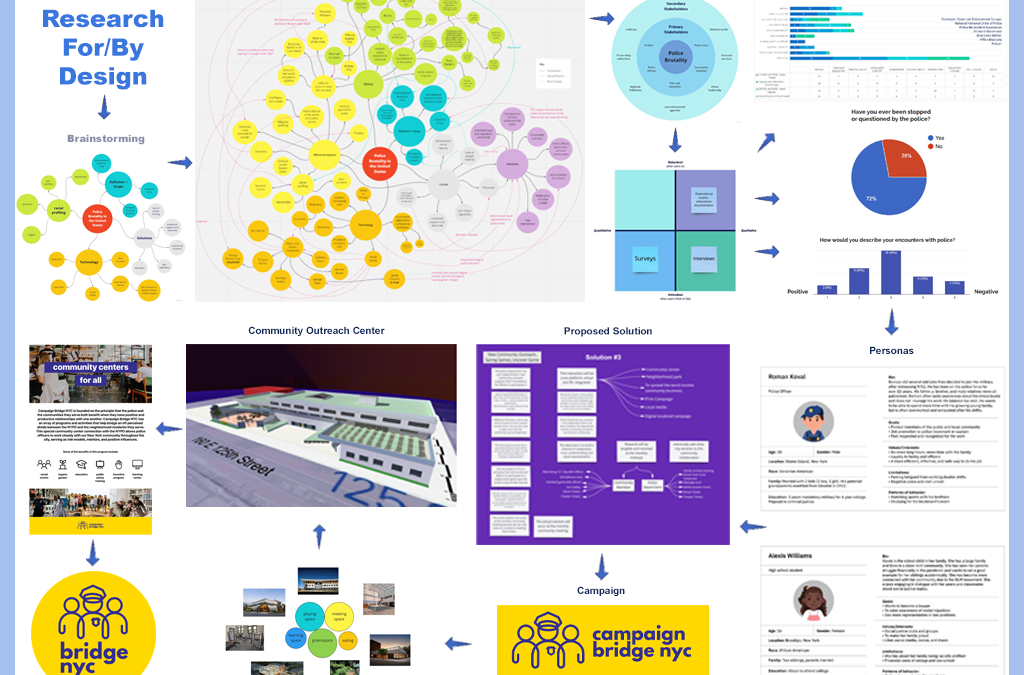Defining the breadth in the scope of the issue to be resolve will save you immeasurable time. Quantitive and qualitative data through several research methods are crucial. Ideas are generative. Create personas that are representative of your major stakeholders. When developing a solution first ask if it is consistent with the team’s aim and values. Understanding and working through your team dynamics, their strengths and weaknesses greatly enhances the project outcome. And nothing anyone on the team suggests is irrelvant.

Campaign Bridge NYC
In IRL, how would this project work? The campaign would need solid backing from State and City agencies and officials at the top level, and personal commitments from both law enforcement employees and the individuals and the business they serve at a local level. And that is a lot to ask for…
Implement a few cultural probes to discover what types of incentives to offer. These incentives have to be varied and broad to satisfy the needs and desires of the different stakeholders. Each group of stakeholders will inevitably have different needs and desires, and each probe will need to be designed for the specific stakeholder.
Compile surveys of the neighborhood to find out what they need and want in a community center, and what they need and want from law enforcement. The future goal is to create a Starter Package, with step by step instructions — How to Build Trust and Respect — Bridge the gap between a community and the law enforcement that serves and protects it, by creating a safe and inviting space that nurtures trust and respect through positive engagement. There should be laws and legislations that encourage this positive engagements, and discourage special interest involvement.

The starter Package would have templates for posters, Instagram pages, website, anything that would be necessary to start a community outreach center. Also guidelines in how a community could convert an existing building into a community center, or how to intrgrate an existing community center into a Bridge program.
Ideation and Prototyping : Impact on Future Projects
The exercises, examples, methods and techniques shown in these lessons demonstrate verified procedural processes for design ideation and prototyping. As I continue to ideate and prototype design solutions, the steps and procedures will eventually become second nature. There was a lot of information packed into a semester. And with time allowing, I’d love to delve into more details on the primary research techniques in the field, that help us understand the users, the affordances in a product, and analzying the user data from the prototype. That’s one element that we did not get a chance to touch much on… methods and techniques of collecting and analyzing the user data from a protoytpe. That data, if collected and analyzed properly would inform us how to improve the following prototype or the next version of the design.



Recent Comments